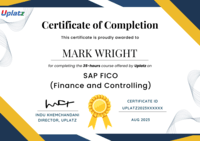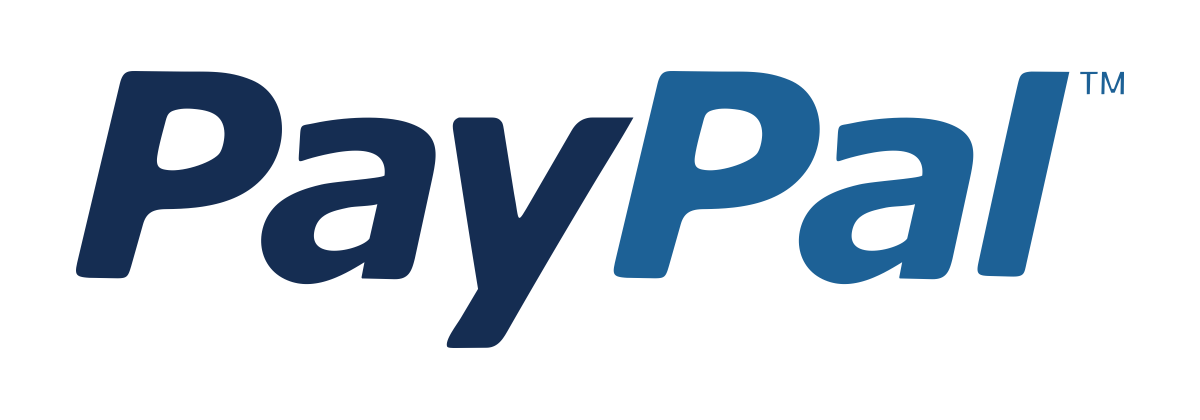GraphQL Federation
Master GraphQL Federation to build scalable, modular, and unified APIs across distributed services. Price Match Guarantee
Full Lifetime Access
Access on any Device
Technical Support
Secure Checkout
Course Completion Certificate
Price Match Guarantee
Full Lifetime Access
Access on any Device
Technical Support
Secure Checkout
Course Completion Certificate
 96% Started a new career
BUY THIS COURSE (
96% Started a new career
BUY THIS COURSE (GBP 12 GBP 29 )-
 86% Got a pay increase and promotion
86% Got a pay increase and promotion
Students also bought -
-

- API Security and Gateways
- 10 Hours
- GBP 12
- 10 Learners
-

- DevOps
- 20 Hours
- GBP 12
- 1677 Learners
-

- Cybersecurity in a nutshell
- 2 Hours
- GBP 12
- 21 Learners

GraphQL Federation is a breakthrough architecture that enables developers to compose multiple GraphQL services into a single, unified API. Introduced by Apollo, Federation empowers organizations to scale their GraphQL infrastructure across multiple teams and domains while still exposing a single graph to clients.
In contrast to monolithic GraphQL servers, Federation promotes modularity, domain ownership, and independent service evolution, allowing each team to manage its own schema while contributing to a shared data graph.
This Mastering GraphQL Federation – Self-Paced Course by Uplatz provides a complete learning path from foundational GraphQL concepts to advanced federation design and deployment. Through hands-on lessons, you’ll learn how to build, compose, and scale federated graphs that unify microservices and power enterprise-level APIs.
🔍 What is GraphQL Federation?
GraphQL Federation is an approach for distributing a single GraphQL schema across multiple services, known as subgraphs, that together form a federated supergraph. Instead of maintaining one massive GraphQL server, each subgraph manages a domain-specific schema — for example, users, products, or orders — while the Apollo Gateway unifies them into one API endpoint.
Federation makes it possible for teams to:
-
Develop and deploy services independently.
-
Avoid schema conflicts using declarative composition rules.
-
Extend and reference entities across domains.
-
Scale the organization’s API architecture as business needs grow.
This architecture balances flexibility and governance, giving large teams the power to innovate rapidly while maintaining a consistent, well-defined API interface.
⚙️ How GraphQL Federation Works
At the heart of GraphQL Federation are three major components:
-
Subgraphs: Independent GraphQL services that define their own schemas and resolvers for specific domains (e.g., accounts, inventory, reviews).
-
Apollo Gateway: The central router that composes subgraph schemas into a single unified schema, resolving requests across services.
-
Entities and References: Shared object types that connect data across subgraphs through entity definitions and key directives.
When a client sends a query to the Gateway, it automatically determines which subgraphs can fulfill each part of the request, orchestrates the calls, and merges the responses into a single payload.
Federation 2.0 enhances this model with improved composition, type safety, and new directives, enabling smoother cross-service collaboration and simpler governance.
🏭 How GraphQL Federation is Used in the Industry
Large enterprises and modern engineering teams are increasingly adopting Federation to manage their API ecosystems. It’s especially powerful in microservice architectures, where multiple teams own different domains.
Typical industry use cases include:
-
E-Commerce Platforms: Combining product, order, and customer data from different services into one unified API.
-
Media & Content Systems: Federating recommendation, user, and analytics graphs.
-
FinTech Applications: Unifying transaction, identity, and compliance services.
-
SaaS & Enterprise Products: Integrating modular data services for global teams and clients.
-
Data & Analytics Platforms: Centralizing access to diverse data sources via one schema.
Companies like Netflix, Expedia, and Shopify use GraphQL Federation to align distributed teams under a single, scalable API strategy.
🌟 Benefits of Learning GraphQL Federation
Mastering Federation unlocks critical skills for modern API and backend development:
-
Unified API Architecture: Merge multiple GraphQL services into one schema.
-
Scalability: Scale development across teams and domains with clear ownership.
-
Modular Development: Build and deploy services independently.
-
Improved Performance: Query only what’s needed, minimizing over-fetching.
-
Enterprise Alignment: Implement consistent schemas and governance policies.
-
Cross-Platform Integration: Connect data from diverse sources using one endpoint.
-
High Employability: Federation skills are increasingly sought after for roles in data engineering, backend, and API design.
By learning Federation, you gain both technical and architectural expertise — skills that directly translate to real-world scalability and system reliability.
📘 What You’ll Learn in This Course
This course offers a structured, hands-on path from fundamentals to advanced implementation:
-
Understand the principles and benefits of GraphQL Federation.
-
Design and manage federated GraphQL schemas using subgraphs.
-
Set up and configure the Apollo Gateway for unified schema composition.
-
Implement entity references, resolvers, and key directives.
-
Scale federated APIs across teams, domains, and microservices.
-
Integrate authentication, caching, and observability tools.
-
Secure and monitor federated deployments in production environments.
-
Apply schema governance, versioning, and lifecycle management best practices.
By the end, you’ll be able to design, deploy, and operate production-ready federated GraphQL architectures that are scalable, maintainable, and team-friendly.
🧠 How to Use This Course Effectively
-
Start with GraphQL Fundamentals: Review queries, mutations, and schema design.
-
Experiment with Simple Subgraphs: Create small, independent services before expanding.
-
Configure the Apollo Gateway: Connect and test your first federated graph.
-
Build Real-World Projects: Simulate enterprise-scale use cases across domains.
-
Explore Advanced Features: Work with caching, tracing, and metrics integration.
-
Focus on Security & Governance: Implement auth, schema validation, and permissions.
-
Review & Iterate: Revisit performance and scaling modules for optimization.
👩💻 Who Should Take This Course
This course is ideal for:
-
Backend Developers working with GraphQL or microservices.
-
Full-Stack Engineers integrating unified APIs across front- and back-end systems.
-
Software Architects designing scalable, distributed API infrastructures.
-
Enterprise Teams coordinating across multiple domain-driven services.
-
Students & Professionals interested in modern API design and federation architecture.
No prior knowledge of Federation is required — a basic understanding of GraphQL and APIs is sufficient.
🧩 Course Format and Certification
The course is fully self-paced, featuring:
-
HD video tutorials and live coding sessions.
-
Downloadable sample schemas, gateway configurations, and projects.
-
Hands-on exercises and mini-projects to reinforce learning.
-
Quizzes and checkpoints for self-assessment.
-
Lifetime access with free updates on new Federation features.
Upon completion, you’ll receive a Course Completion Certificate from Uplatz, verifying your expertise in GraphQL Federation and distributed API architecture.
🚀 Why This Course Stands Out
-
Comprehensive Coverage: From foundational GraphQL concepts to advanced Federation 2.0 techniques.
-
Hands-On Learning: Every module includes live coding and projects.
-
Enterprise Relevance: Designed for real-world API and microservice environments.
-
Best Practices Focus: Emphasizes schema governance, security, and scalability.
-
Future-Ready Skills: Federation is the next evolution of GraphQL — be among the first to master it.
By completing this course, you’ll gain the technical fluency and architectural insight needed to lead GraphQL-driven projects in any organization.
🌐 Final Takeaway
As applications grow in complexity, teams need APIs that scale with them. GraphQL Federation provides that foundation — unifying multiple services under a single, flexible schema while maintaining independent ownership and rapid iteration.
The Mastering GraphQL Federation – Self-Paced Online Course by Uplatz gives you the tools and understanding to implement this powerful architecture in production environments. Whether you’re designing APIs for a startup or modernizing enterprise systems, Federation enables collaboration, scalability, and clarity.
Start learning today and become a GraphQL Federation expert — ready to build the future of distributed API systems.
By completing this course, learners will:
-
Build and deploy federated GraphQL architectures.
-
Use Apollo Federation tools for schema composition.
-
Design modular and scalable API schemas.
-
Collaborate across teams and domains using subgraphs.
-
Secure, monitor, and optimize federated APIs.
Course Syllabus
Module 1: Introduction to GraphQL Federation
-
What is GraphQL Federation?
-
Problems Federation solves vs schema stitching
-
Key concepts: subgraphs, entities, and gateway
Module 2: Setting Up Federation
-
Installing Apollo Federation libraries
-
Defining subgraphs and schemas
-
Running an Apollo Gateway
Module 3: Entities & References
-
Entity definitions and resolvers
-
Sharing types across subgraphs
-
@key directive explained
Module 4: Schema Composition
-
Composing schemas into a unified graph
-
Managing schema conflicts
-
Tools for schema validation
Module 5: Resolvers & Data Fetching
-
Writing resolvers for federated services
-
Handling cross-service relationships
-
Optimizing data fetching
Module 6: Deployment Strategies
-
Running subgraphs independently
-
Apollo Gateway deployment
-
Scaling federated services in production
Module 7: Security & Monitoring
-
Authentication and authorization in Federation
-
Rate limiting and query complexity control
-
Monitoring with Apollo Studio and observability tools
Module 8: Real-World Projects
-
Federated e-commerce API (products, users, orders)
-
Multi-team SaaS application backend
-
Cross-domain analytics API
Module 9: Advanced Federation Patterns
-
Versioning and schema governance
-
Migrating from monolithic GraphQL to Federation
-
Combining Federation with REST/other APIs
Module 10: Best Practices & Future Trends
-
Collaboration workflows for multiple teams
-
Testing federated services
-
The future of GraphQL Federation
Learners will receive a Certificate of Completion from Uplatz, validating their expertise in GraphQL Federation and distributed API design. This certification demonstrates readiness for roles in backend engineering, full-stack development, and API architecture.
GraphQL Federation expertise prepares learners for roles such as:
-
Backend Developer (GraphQL APIs)
-
Full-Stack Developer (Federated APIs)
-
API Engineer
-
Solutions Architect
-
Enterprise Integration Specialist
Federation is increasingly adopted by large enterprises and SaaS platforms, making it a critical skill for developers building scalable distributed systems.
-
What is GraphQL Federation?
A model for combining multiple GraphQL services into a single unified graph. -
How is Federation different from schema stitching?
Federation provides entity-based composition with clearer ownership, while schema stitching merges schemas without governance. -
What is the role of Apollo Gateway?
It unifies subgraphs into a single query endpoint for clients. -
What are entities in GraphQL Federation?
Shared objects across subgraphs identified with the@keydirective. -
How do subgraphs communicate in Federation?
Via entity references and resolvers managed by the gateway. -
What are common use cases for Federation?
Large-scale SaaS, e-commerce platforms, and multi-team enterprise APIs. -
How do you secure federated GraphQL APIs?
With authentication, authorization, rate limiting, and query complexity checks. -
What are the challenges of Federation?
Schema governance, performance optimization, and cross-team coordination. -
What are advantages of Federation?
-
Modular schema design
-
Team autonomy
-
Scalability
-
Where is Federation widely used?
By enterprises with distributed teams, SaaS companies, and cloud providers.









